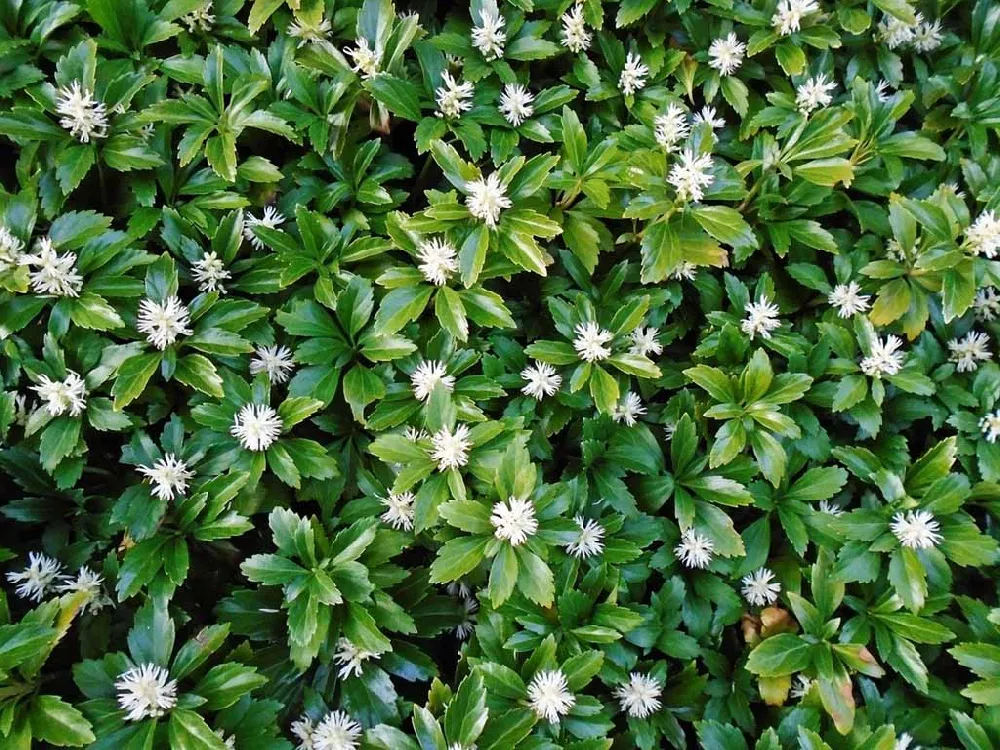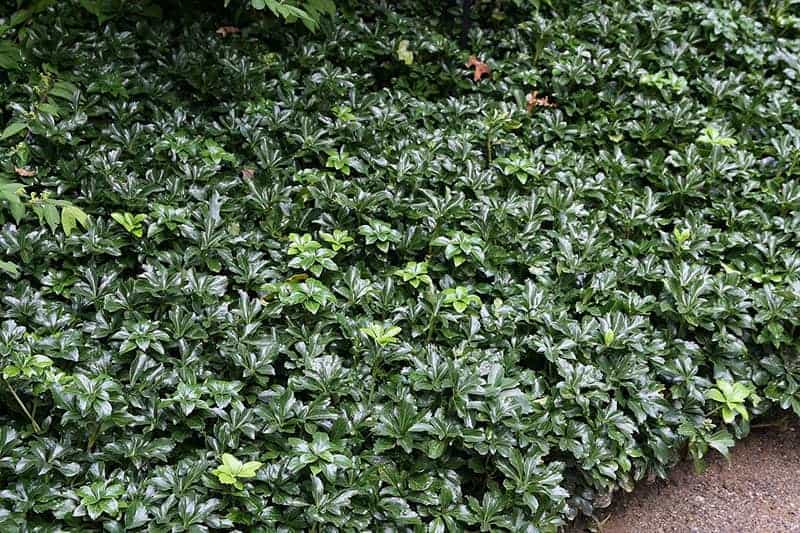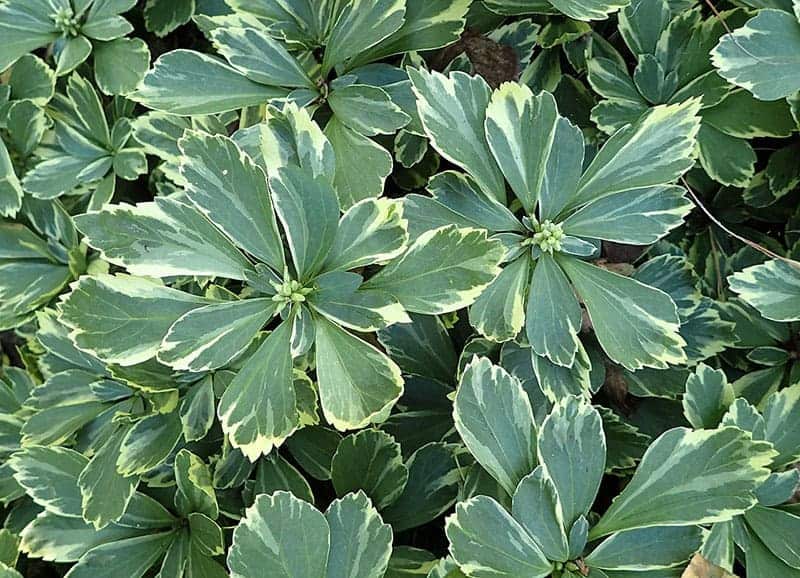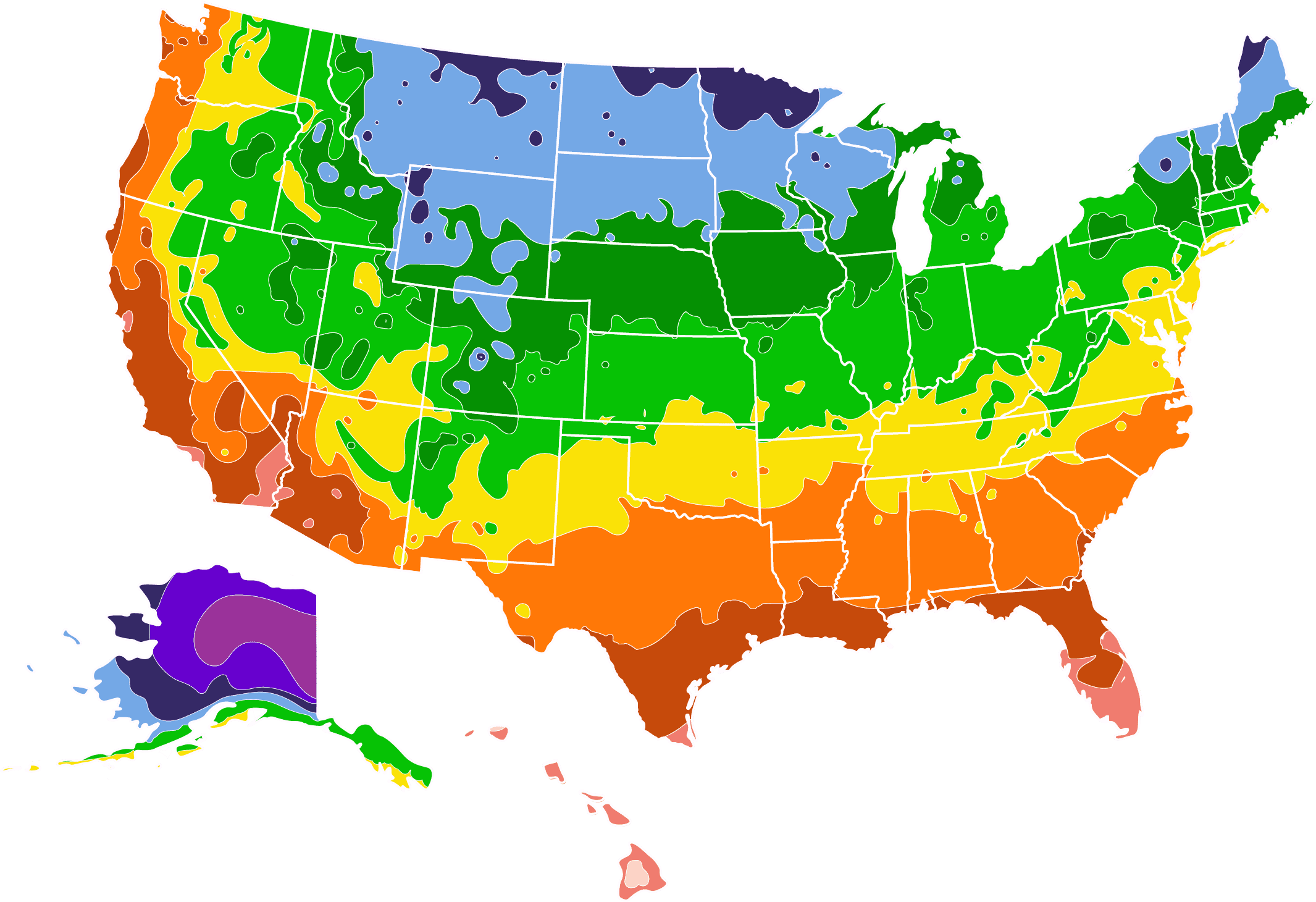- Home >
- Ornamental Plants >
- Pachsandra
Pachsandra for Sale - Buying & Growing Guide
Garden Goods Direct - Pachysandra
Enter your zip code to find nearby stores that may carry this plant.
If you are looking for an effective, attractive ground cover for a shady spot, Pachysandra is a great option. Also known as Japanese spurge, this easy-to-grow plant reaches less than a foot tall and spreads quickly via underground roots. Pachysandra flowers with tiny white blooms every spring, but the plant’s main attraction is its evergreen, dark leaves that grow in whorls around their stems. Here are other reasons to love Pachysandra:
- They quickly fill in areas around shrubs and trees and create a thick carpet of foliage.
- Are particularly useful for landscaping slopes that need an erosion control solution.
- Can be used in place of mulch where other plants will not grow due to lack of sunlight.
Planting and Care
Planting instructions
Given time, Pachysandra forms a colony that can be hard to remove. Because of this, many localities consider them invasive. Before purchasing or planting Pachysandra, check your local laws to be sure the plant is allowed in your area.
Pachysandra does well in USDA hardiness zones 4 through 7. This groundcover does best in soil that is moist and well-drained. They will flourish in almost any type of soil from clay to sand as long as it is not too soggy. Before planting, clear away any competing plants, including grass or weeds. Pachysandras should be planted approximately 12 to 18 inches apart and rows of plants should be staggered to provide good coverage. Leave at least 12 inches of growing space between new plantings and the edge of the area to be filled.
Planting holes should be dug two to three times as wide as the new plant’s root ball and approximately the same depth. Place the plant in the hole so that the top of the root ball is slightly above ground level, then fill in with the remaining dirt. If planting in heavy clay, then mix in some compost or manure. If planting in sandy soil, then mix in some organic material such as compost or peat moss. Press down to remove air pockets as you go and water halfway through the backfilling process, and then again at the end. Applying a thin layer of mulch will help retain soil moisture.
Watering and nutrients
After planting Pachysandra, provide the entire planting area with a deep watering. Once well established in an area with moist, well-drained soil, even a new Pachysandra will need very little watering, and even less in the winter when it is dormant. The plant is drought tolerant and overwatering can lead to root rot. If you live in an area that is experiencing an extended dry season and the leaves show signs of wilting, provide them with a soaking.
Though adult Pachysandra need no additional nutrients beyond what it gets from the soil in which it is planted, newly planted specimens will benefit from a fertilizer that contains iron and/or sulfur in the spring.
Pruning
Pachysandra plants require almost no care, but if you want them to maintain a healthy, lush appearance it is a good idea to cut them back to half their height in late winter or early spring before new growth appears. For beds that have been planted in the past year or two this can be done with pruning sheers and will encourage the plant to fill in bare spots. For more established plants you can use a mower, cutting them in early spring to a height of about four inches.efore trimming clear the area of stones and sticks and to ensure that your mower blade has been sharpened in order to prevent the plants from being torn out of the ground.
Pests, diseases, and animals
Pachysandra are extremely hardy plants, but they are vulnerable to diseases caused by overwatering or wet weather conditions. The most common is a leaf blight called Volutella that starts as tan spots on the plant’s leaves and eventually leads to leaves and infected twigs dying. The best way to avoid this is to plant Pachysandra in an area where it gets a little bit of sun and the soil drains well. If you find your plants are impacted, remove and destroy them completely. Fungicides can help and should be applied every two weeks in the spring.
Beyond disease, Pachysandra can be impacted by scale, which are tiny white insects that suck the plant’s vital fluids away. Scale can be treated with neem oil if it is caught early, but once plants are infected for several years in a row, they may decimate an entire colony of Pachysandra.
Pachysandra is a deer and rabbit-resistant plant.
Light
This plant performs best in full shade. It is an ideal plant to use as a ground cover under the shade of large trees where grass and most other plants would not survive, or to create a green blanket underneath shrubs (University of Vermont Extension).
Pachysandra loves full shade, and when these ideal conditions are met, it will grow up to heights of ten inches. When grown in partial shade and partial sun, you can expect your plant to not perform as well, more likely growing to around six inches in height. The plant is much more tolerant of the summer sun than the winter sun and may struggle to cope with sunlight in colder temperatures.
If you must plant your Pachysandra in a spot of partial sunlight, try to ensure it gets morning sun and afternoon shade so that it is protected from the strongest light of the day. You will know your plant is getting too much sun if its leaves start to look bleached, and in this case, you should consider moving your plant to a more appropriate location with more shade.
Temperature
Pachysandra plants are tolerant of a wide range of temperatures. They are not frost tender and are hardy in USDA zones 3-9.
Propagation
Pachysandra can be propagated with both stem cuttings or division. The method of division will produce faster results, but stem cuttings root easily, so both methods are likely to result in successful propagation.
To propagate from stem cuttings, you will need to select a cutting from the plant of around four inches in length. Choose a stem that is mature at the base with new leafy growth at the tip and avoid any stems with buds or flowers on. Make the cutting just below a set of leaves and then remove all of the leaves from the lower half of the cut stem.
Prepare a small pot of moist growing medium, and create a hole in the center with the blunt end of a pencil. Dip the cut end of the stem in rooting hormone and then insert it into the prepared hole, with the lower leaves at soil level. Maintain moist soil and keep the pot in a warm position. Roots should appear in six to eight weeks. You will know rooting has taken place by looking out for new growth on the cutting, or gently tugging the stem to feel for resistance below soil level. Once rooting has occurred, you should wait a further four weeks before transplanting the cutting to a shaded spot outside, planted directly in the ground.
You can propagate clumps of this plant by division every four or five years. To do so, heavily water the plants the previous evening, and then carefully dig them up with a shovel the following morning in cool weather. Once removed from the ground, divide the root ball up into two or more sections with a sharp knife, and then replant the Pachysandra in new spots. Water generously for several weeks after planting, and the newly divided plants should soon spread to cover more ground.
Flowering
Flowers bloom on this plant in late spring through to summer. The blooms are tiny and white in color, with a sweet fragrance. They have a fluffy quality and are not especially remarkable. It is generally considered that the glossy green foliage is the main attraction and real star of the show for the Pachysandra.
Pachysandra Varieties
Pachysandra terminalis is also commonly known as green carpet, thanks to its ability to form dense, bright green growth in shaded areas where many other plants will typically not thrive. It is a very popular type of ground cover, tolerant of many types of soils, pollution, and even drought tolerant once mature. The most common type of Pachysandra features glossy solid green leaves, but if you are looking for something slightly different to fill your shaded areas, other varieties of Pachysandra are available.
Pachysandra terminalis “Green Sheen”
The leaves of this variety are extra shiny, with a slightly curled quality. It grows more slowly than other Pachysandra.
Pachysandra terminalis “Variegata”
The leaves of this variety are variegated, with patterns in green and cream colors.
Pachysandra terminalis “Silver Edge”
This variety features dark green leaves with creamy colored edges. It has won the prestigious Award of Garden Merit from the Royal Horticultural Society.
Pachysandra terminalis “Green Carpet”
This variety has coarse-toothed foliage in a deep green shade. The plant is resistant to both deer and rabbits.
FAQs
Are Pachysandra poisonous?
Pachysandra plants are non-toxic, making them a safe choice for homes with children and domesticated animals.
How can I get rid of Pachysandra?
If you made a mistake by planting Pachysandra or have moved into a property where Pachysandra has long existed and you want to remove it, it will require a a significant amount of work. The plant can be difficult to control, and its hardiness and extensive root system makes its removal a challenge. Your options include: Digging it up, taking care to get all of the roots. This generally requires removing the top four to six inches of soil. Choke the plant by covering it with black plastic and keeping it from both sun and water. This process generally takes at least three months depending upon the location of the colony. Shadier areas will take longer to kill. Spray it with plant-killing chemicals. This solution presents many collateral risks, and is best undertaken by a professional.













